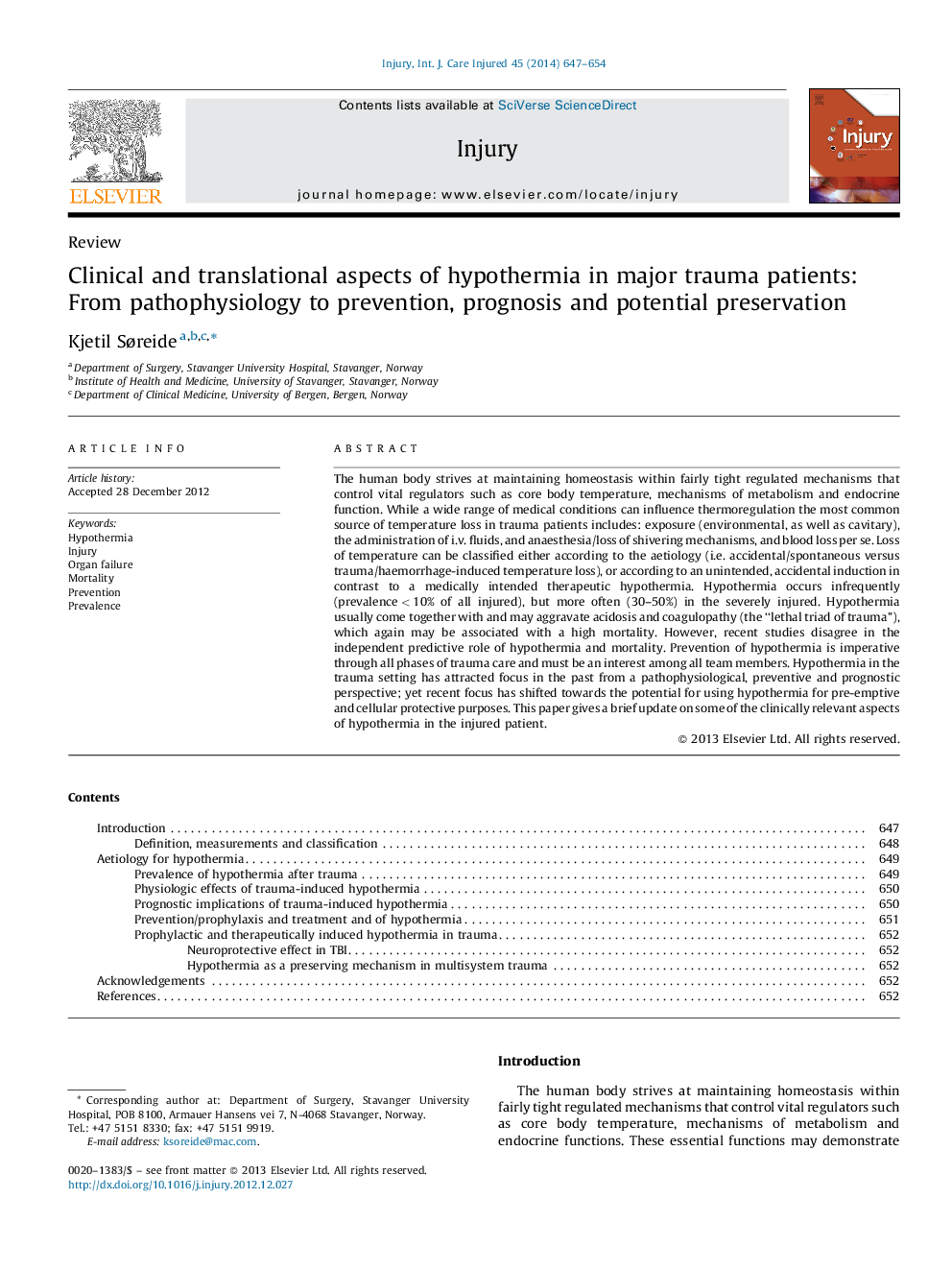| Article ID | Journal | Published Year | Pages | File Type |
|---|---|---|---|---|
| 3239468 | Injury | 2014 | 8 Pages |
The human body strives at maintaining homeostasis within fairly tight regulated mechanisms that control vital regulators such as core body temperature, mechanisms of metabolism and endocrine function. While a wide range of medical conditions can influence thermoregulation the most common source of temperature loss in trauma patients includes: exposure (environmental, as well as cavitary), the administration of i.v. fluids, and anaesthesia/loss of shivering mechanisms, and blood loss per se. Loss of temperature can be classified either according to the aetiology (i.e. accidental/spontaneous versus trauma/haemorrhage-induced temperature loss), or according to an unintended, accidental induction in contrast to a medically intended therapeutic hypothermia. Hypothermia occurs infrequently (prevalence < 10% of all injured), but more often (30–50%) in the severely injured. Hypothermia usually come together with and may aggravate acidosis and coagulopathy (the “lethal triad of trauma”), which again may be associated with a high mortality. However, recent studies disagree in the independent predictive role of hypothermia and mortality. Prevention of hypothermia is imperative through all phases of trauma care and must be an interest among all team members. Hypothermia in the trauma setting has attracted focus in the past from a pathophysiological, preventive and prognostic perspective; yet recent focus has shifted towards the potential for using hypothermia for pre-emptive and cellular protective purposes. This paper gives a brief update on some of the clinically relevant aspects of hypothermia in the injured patient.
